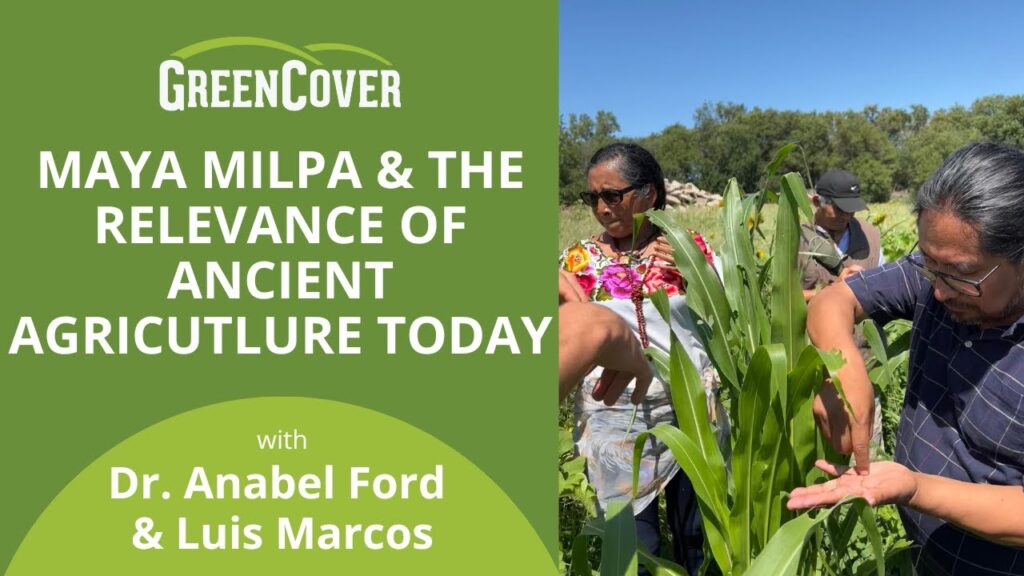Exploring the Ancient Milpa Farming Tradition
Deep in the heart of Mexico’s lush landscapes, the ancient practice of Milpa farming persists, reflecting a harmonious relationship between nature and agriculture. This traditional farming technique is not merely a means of crop production; it’s a centuries-old cultural cornerstone that has sustained civilizations such as the Maya and Aztecs. Today, venturing into the rural areas where Milpa is still practiced offers an insightful glimpse into Mexico’s agrarian history and the rich tapestry of its indigenous heritage.
The core of Milpa farming revolves around the cultivation of the «Three Sisters» – corn (maize), beans, and squash. This trio of crops is expertly planted together, benefiting from each other’s company in a brilliant display of agricultural symbiosis. Corn provides a natural trellis for beans to climb, beans fix nitrogen in the soil to the advantage of all three, and squash spreads across the ground, shading it to preserve moisture and deter weeds. Observing this interdependent planting system reveals the ingenuity of ancient Mesoamerican farmers and their innate understanding of ecological balance.
Embarking on a journey to see Milpa farms can also lead adventurers to engage with local communities. Many of these communities are the guardians of Milpa’s legacy, and they warmly share their knowledge and stories with visitors. They demonstrate how Milpa goes beyond farming; it’s a philosophy that encompasses a deep respect for the earth, the cycles of the moon and sun, and the understanding of life’s interconnectedness. Through conversations and participation, travelers gain profound insights into how tradition and sustainability can coexist in harmony.
To truly appreciate the Milpa tradition, many adventurers partake in hands-on experiences that involve sowing seeds or harvesting crops alongside the locals. This immersive approach educates visitors on the time-honored techniques still used today, such as planting by the lunar cycle or employing organic fertilizers made from native plants and fish. The result is an opportunity not only to learn about an ancient agricultural method but also to understand the ethos of resourcefulness and eco-friendliness that defines so much of rural Mexican culture.
Finally, sampling the culinary outcomes of Milpa farming is an adventure in itself. The freshness and flavor of the produce are unparalleled, often featured in traditional dishes that have been passed down through generations. Experiencing the burst of tastes in a simple yet nutritious Milpa-based meal underlines the significance of this agricultural practice. It’s a celebration of biodiversity, culinary heritage, and the vibrancy of Mexico’s agricultural landscape—an experience that leaves travelers with a deep appreciation for a practice as enduring as the nation’s storied past.
The Milpa System: A Testament to Indigenous Agricultural Expertise
The Milpa system is a traditional form of agriculture practiced by indigenous peoples throughout Mesoamerica, including regions in Mexico. It is characterized by its sustainable and communal approach to farming. The process is a sophisticated form of polyculture, which integrates multiple crop species on the same plot of land, a practice that has been refined over countless generations.
This ancient agricultural method is notable for its central trio of crops known as the «Three Sisters»: maize (corn), beans, and squash. These three crops work symbiotically, each providing vital nutrients or structural support to the others. Maize grows tall, allowing the beans to use it as a natural trellis, while squash spreads across the ground, blocking sunlight that could allow weeds to thrive.
Beyond the «Three Sisters,» farmers practicing the Milpa system often incorporate other crops such as tomatoes, chilies, and a myriad of native herbs. This biodiversity not only nourishes the soil but also creates a more resilient system able to withstand pests and changes in climate. The diversity ensures that even if one crop fails, others will likely survive to feed the community.
Importantly, the Milpa system also involves periods of fallow as part of its cycle. Fields are cultivated for several years and then allowed to rest, which helps to restore soil fertility naturally. During these fallow periods, a wide variety of other plant species often emerge, further contributing to the local ecosystem’s diversity and resilience.
The wisdom inherent in the Milpa system is not only in the technical aspects of planting but also in the social structures that support it. Communities work together to plant, tend, and harvest the Milpa, ensuring that knowledge and skills are passed down through generations. It’s a way of life that respects the rhythms of nature and the necessity of community, making it a profound testament to indigenous agricultural expertise.
Sustaining Biodiversity Through the Milpa Cycle
The Milpa farming system, deeply rooted in Mexico’s agriculture, represents a powerful example of how traditional practices can contribute to biodiversity conservation. This time-honored system extends beyond simply planting crops; it promotes an intricate relationship between the land and a vast variety of plant species that can be cultivated. By utilizing a rotational method over several years, the Milpa cycle allows the earth to rejuvenate, ensuring that nutrients are replenished without the need for chemical fertilizers.
In the Milpa system, farmers plant multiple crops, such as maize, beans, and squash, together in the same field. This intercropping method fosters a symbiotic environment where each plant species supports the others. For instance, the bean plants fix nitrogen in the soil, which in turn feeds the maize, while the sprawling squash leaves provide ground cover, minimizing weeds and preserving soil moisture. This biodiversity is not only beneficial for crop health and yield but also serves as a habitat for a variety of insects and small wildlife, integrating pest management through natural ecological processes.
Moreover, the diversity of crops within the Milpa cycle safeguards against the risk of total crop failure due to pests or extreme weather events. This strategic diversity ensures that some food production persists, regardless of adversities. Additionally, by maintaining a rich variety of plants within agricultural plots, the Milpa system helps preserve the genetic diversity of traditional crops, some of which are unique to Mexico and vital for global food heritage. Thus, the Milpa cycle is more than a farming technique; it’s a testament to the balance between cultivation and nature, striving to sustain life in all forms.
How the Milpa Method Nourishes Both People and the Planet
The Milpa farming system, a millennia-old indigenous agricultural practice originating in Mesoamerica, is a shining example of sustainable land management that supports biodiversity and food security. At its core, the Milpa method involves intercropping staple crops such as maize (corn), beans, and squash, creating a polyculture that nurtures a symbiotic relationship among the plants. This ancient technique not only provides a rich source of nutrients for the community but also plays a critical role in maintaining the health of the ecosystem.
Maize, the central element of the Milpa system, serves as a natural trellis for beans to climb upon. The beans, in turn, fix nitrogen in the soil, an essential process for converting atmospheric nitrogen into a form that plants can absorb and use as a nutrient. The broad leaves of the squash plants spread across the ground, shading it and helping to retain soil moisture, as well as inhibiting the growth of weeds. Through these mutualistic interactions, the Milpa promotes a balance that increases soil fertility and reduces the need for synthetic fertilizers.
Beyond its direct agricultural benefits, the Milpa method fosters a deep connection between people and the land. The crops grown within a Milpa mimic the diversity of a natural ecosystem, providing a variety of foods that make for a nutritious and balanced diet. This aligns with the practices of ancestral heritage and represents a collective memory of land stewardship, where the knowledge of how to coexist with the earth is passed down through generations.
The significance of the Milpa also extends to its carbon sequestration abilities. By enhancing the organic matter in the soil through the decay of plant roots and other organic residues, carbon is captured and stored in the ground. This natural process mitigates the impact of greenhouse gases, positioning the Milpa as a low-tech but highly effective tool in the fight against climate change.
Today, with a growing global interest in sustainable agriculture, the Milpa method provides a valuable blueprint for how humanity can nourish itself while respecting the finite resources of our planet. Its principles of diversity, interdependence, and organic management are increasingly relevant in an age where ecological consciousness is rising, and the demand for systems that promote both human and environmental health is critical. The ongoing practices of Milpa cultivation in Mexico are more than just a nod to the past; they are a roadmap for a sustainable future in agriculture.



